With their eye-catching flowers, the Montbretia attract everyone's attention. You can choose from a variety of varieties with different flower colors that can be used in beds or as cut flowers.

Although the Montbretia (Crocosmia) are fairly easy to care for, there are a few things to consider when overwintering: In most regions the Montbretia cannot be overwintered in the garden - they must be dug up and overwintered frost-free will. In this article you will learn everything about planting and caring for the bulbous plant and how to safely overwinter the Montbretia. We also present some of the most beautiful Montbretien varieties.
contents
- Montbretia: characteristics and origin
- The most beautiful Montbretien varieties
-
Planting Montbretia: location and procedure
- The right location for Montbretien
- Procedure for planting
- Plant neighbors: combine Montbretia
-
The right care
- watering, fertilizing and cutting
- Montbretia not blooming: what to do?
- Are Montbretia hardy?
- multiply Montbretia
- Are Crocosmia poisonous?
Montbretia: characteristics and origin
The Montbretia belong to the iris family (Iridaceae). The genus consists of around 10 species, but only two hybrid forms are mainly used as ornamental plants in gardens and parks. This is the Montbretie C masonium x C paniculata and the Garden Montbretie (Crocosmia x crocosmiiflora), resulting from a cross between the Gold Montbretie (Crocosmia aurea) and the Potts-Montbretie (Crocosmia pottsii) has emerged. The home of the two parent species is in southern Africa. Their natural habitats include meadows and wooded edges in sunny to light, partially shaded locations, but also stream banks and sandbanks of rivers.
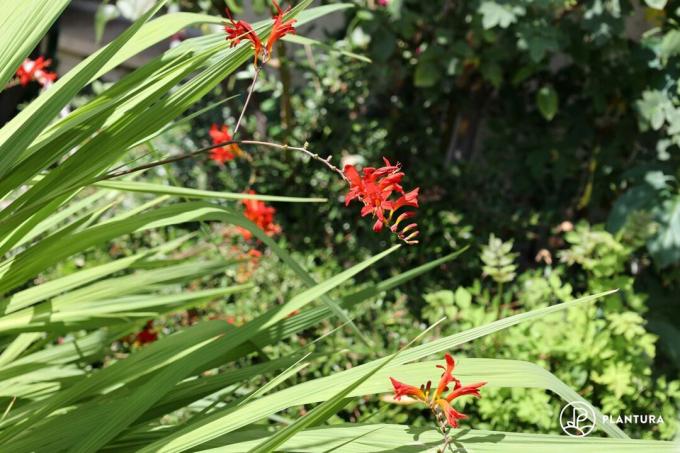
In our climate, the Montbretia is deciduous and only partially hardy - in areas with a subtropical climate, on the other hand, the bulbous plant is wintergreen. It can also be cultivated in larger pots. The herbaceous perennials are somewhat similar in appearance to the gladioli (Gladiolus). They form dense, upright clumps with a height of 50 to 120 cm. The Montbretia spread underground via rhizome runners and daughter tubers. The sessile, green leaves are up to 50 cm long and fan out from the center of the plant. As is typical for the iris family, the leaf shape resembles a sword. Up to 20 mirror-symmetrical, hermaphroditic flowers are arranged in two-row spikes on the inflorescence, some of which is almost horizontally curved. They are funnel-shaped and, depending on the variety, can be red, orange, or yellow in color. The heyday of the Montbretia usually extends from July to September. For our native bees and other insects, the Montbretia are not an exceptionally valuable plant.
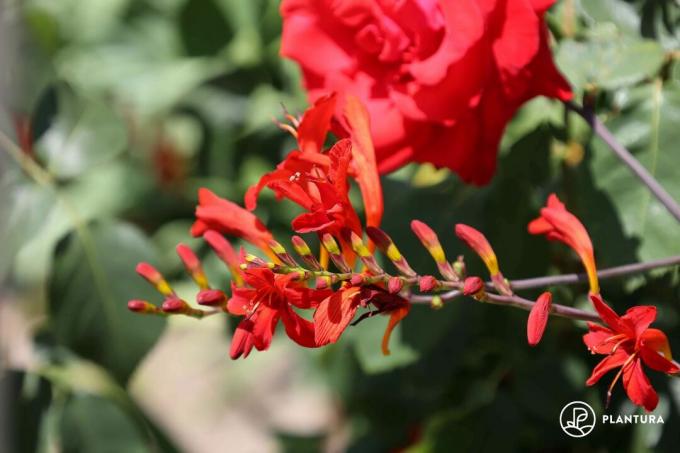
A notice: In subtropical climate zones, including Ireland, the Montbretie is classified as an invasive species. Due to their strong spread in nature, the biodiversity of the ecosystems there will very likely be significantly impaired.
The most beautiful Montbretien varieties
The many different varieties of the garden Montbretie differ mainly in their flower color, the growth height, sometimes the flowering time and the winter hardiness. Below we present some of the most beautiful Montbreti. Preceded are two hybrids that resulted from crossing other parent species and are popular because of their robustness.
- C masonium x C paniculataˈLuciferˈ: The bright red flowers of this robust, vigorous variety appear from July to August. It reaches a height of 80 cm to 120 cm and is one of the hardiest varieties with a tolerance of about -15 °C. In England, the Montbretia ˈLuciferˈ even received an award with the Award of Merit, which is given to plants that are particularly well suited to cultivation in the British Isles.
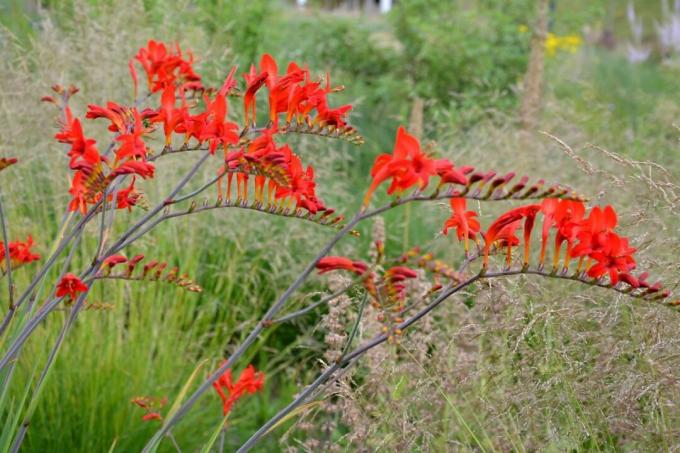
- C masonium x C paniculataˈSevern Sunriseˈ: This variety is also quite vigorous, robust and grows up to 100 cm high. Like ˈLuciferˈ, it is relatively hardy and has orange-red flowers with a lighter center.
- Crocosmia x crocosmiiflora ˈEmily McKenzieˈ: This large-flowered variety produces intense orange flowers with a reddish-brown ring in the center from mid-August to September. It grows up to 75 cm high and, like the following varieties, is only hardy to about -5 °C.
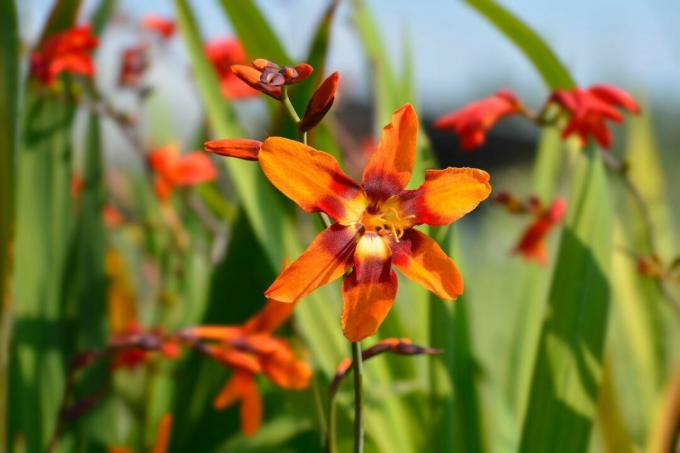
- Crocosmia x crocosmiiflora ˈRed Kingˈ: ˈRed Kingˈ is a hardy, historical strain that produces small, orange-red flowers from July to September. It reaches a growth height of between 40 and 80 cm and is only hardy down to -5 °C.
- Crocosmia x crocosmiiflora ˈGeorge Davisonˈ: With its yellow flowers, the strain is more of a counterpart to the ˈLuciferˈ stereotype. From July to August, the flowers are in full bloom. The growth height of ˈGeorge Davisonˈ is about 60 cm and the variety tolerates only a few minus degrees of about -5 °C.
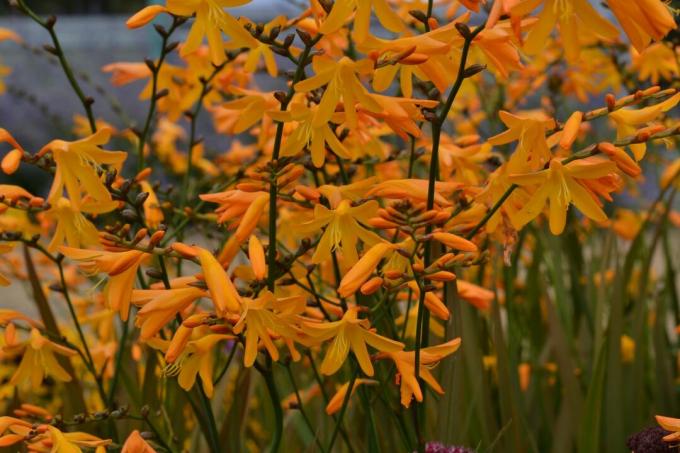
- Crocosmia x crocosmiiflora ˈButtercupˈ: This variety, which grows up to 70 cm high, bears apricot-yellow flowers from August to September. Their winter hardiness is also only about -5 °C.
- Crocosmia x crocosmiiflora ˈLimpopoˈ: The flowers of this strain are colored in a mixture of orange and salmon pink and are therefore particularly striking. They can be viewed from July to October. The growth height of ˈLimpopoˈ is about 80 cm and the winter hardiness is about -5 °C.
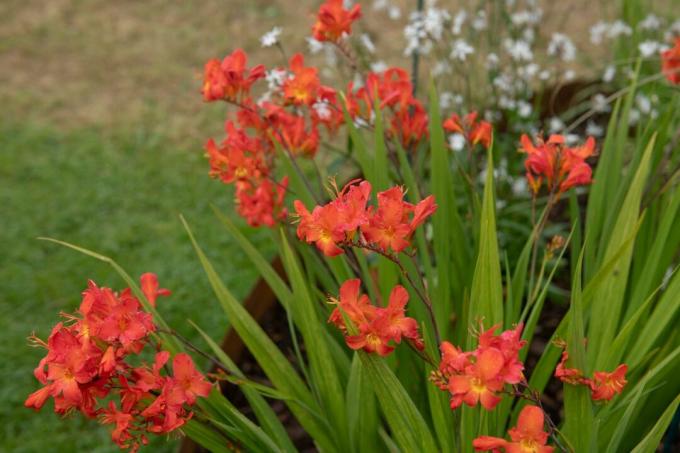
Planting Montbretia: location and procedure
There are a few things to consider when choosing a location and when planting the Montbretia. We will explain in detail below what these are.
The right location for Montbretien
The location of the garden Montbretia should be as warm as possible. This means that in cooler regions, a full sun to sunny and sheltered place should be chosen - in warm regions, such as in the wine-growing climate, is more of a sunny to lightly shady location suitable. The same applies to Montbretia that are planted in tubs. For cooler regions, it is advisable to place the planter near a wall or wall that still radiates heat after sunset. The subsoil should be fresh, moderately nutritious and above all well drained. Heavy, dense soils must be thoroughly loosened and mixed with sand up to a volume of at least 30%. More tips for soil improvement general information can be found in our special article.
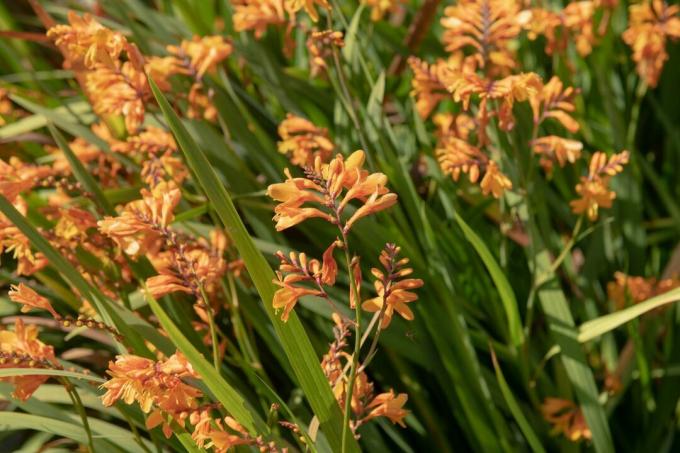
The perfect location for Montbretien:
- Full sun, sunny and sheltered
- With soil that warms up quickly, well drained; no compacted and waterlogged soils
- Always moist, slightly acidic, nutrient-rich soil
Procedure for planting
Since the tubers of the Montbretia are more or less sensitive to frost depending on the variety, it can be helpful to plant them a little deeper, i.e. about 10 to 20 cm deep. Planting takes place in May after the last frosts. When improving or loosening the soil, which takes place in advance, some compost can be mixed in for optimal nutrient supply. It is best to use high-quality potting soil to fill the planters, which should be at least 30 cm high. Our peat-free, for example, is ideal for this Plantura organic potting soil which covers the nutrient requirements of the tuber plant completely and adequately at the beginning and through which contained broken expanded clay as well as through coconut and wood fibers over the necessary permeability has. A drainage layer of expanded clay about 3 cm high should be filled under the soil and the pot needs a drain for excess watering.
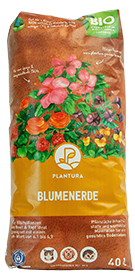
Plantura organic potting soil
Organic, peat-free & climate-friendly:
For all flowering plants in pots & in beds,
ensures a lush, long-lasting bloom, 100% natural
Pot planting is also an easy way to prevent perennials from spreading. Barriers such as root barriers or edges should be used to limit the spread, especially in warm areas.
In order to create a visually harmonious situation, it makes sense to plant the Montbretia tubers in small groups of 3 to 10 plants. A planting distance of about 35 cm should be maintained. The planting distance in the bucket is between 5 and 10 cm.
Since the tubers of the Montbretia are mainly available on the market, growing from seeds is a bit difficult would be more cumbersome and would take longer to flower, it makes less sense to use this alternative Select.
Plant neighbors: combine Montbretia
In general, the Montbretia can be combined well with various grasses (Poales) and other perennials of the same color to dark-leaved that have similar site requirements. Optically matching plant partners would also be, for example torch lilies (Kniphofia spec.), African Lilies (agapanthus spec.) and dahlias (dahlias spec.). There are other possible combinations daylilies (Hemerocallis spec.), red-leaved Heuchera cultivars (Heuchera hybrids) or Indian nettles (Monarda spec.).
The right care
Except for the hibernation measures, the Montbretie proves to be easy to care for. What we should keep an eye on every now and then, we will now explain in the further course.
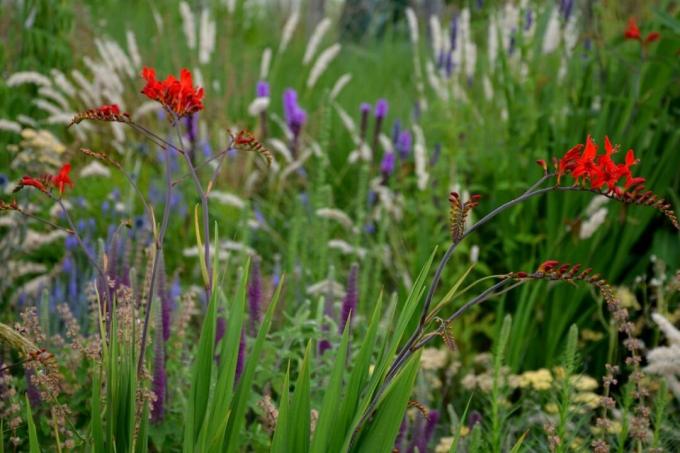
watering, fertilizing and cutting
Since the bulbous plant prefers permanently fresh soil, the soil should be checked and preferably watered with rainwater, especially on hot days and in dry phases. When planting in tubs, a daily check is necessary in summer: the substrate should always feel slightly damp under the top layer. However, waterlogging should be avoided, as this could quickly cause the tubers to rot. As far as the nutrient supply is concerned, a single application of compost in the spring is completely sufficient. When planting in tubs, either the substrate should be changed annually or improved with some compost. A larger pruning of the bulbous plant should take place in autumn at the earliest, when the foliage of the Montbretia has completely withered. Then the above-ground parts of the plant can be cut back to a few centimeters. This is particularly useful if you spend the winter indoors. Otherwise, only withered inflorescences are cut out during the vegetation phase or fresh flowers are separated for the vase. When used as a cut flower, only a few of the first Montbretia flowers should already have blossomed. If the Montbretia are in a location exposed to the weather, attaching them to sticks can prevent the inflorescences from snapping off.

Montbretia not blooming: what to do?
The lack of flowering can be mainly due to the wrong choice of location. This is then usually too shady and cool or the plant also suffers from waterlogging or drought. The solution to the problem is transplanting the Montbretia to a suitable location as described above.
Are Montbretia hardy?
As already mentioned, the Montbretia are only partially hardy. Only about two varieties can withstand temperatures down to -15 °C, the rest tolerate even less than minus degrees. In regions with mild winters, the tubers can be left in the ground. In order to improve the winter hardiness a little, it is advisable to plant the tubers deeper and protect them with a mulch or fir branches. In most locations here in Germany, the tubers should be taken out of the ground and overwintered frost-free in order not to risk losses. For frost-free hibernation of the Montbretia, the tubers can be dug up before the first frosts, placed in a bucket with slightly damp sand and placed in a dark, cool place. Anyone who has planted their Montbretia in tubs can simply place them as they are in the frost-free wintering place.
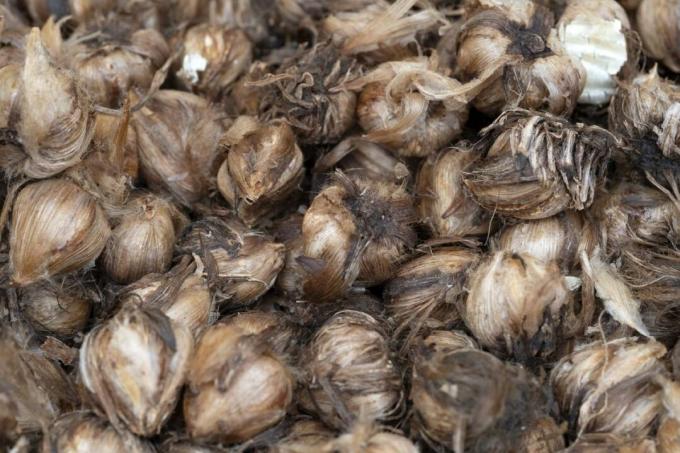
multiply Montbretia
Since the garden Montbretia only develop sterile seeds, propagating the Montbretia with your own seeds is no longer necessary. However, it is increasing Crocosmia usually by itself with the help of daughter tubers. Ideally, these are carefully separated from each other when digging up for the winter and transplanted individually next spring. At well-suited locations, the Montbretia form a large number of daughter tubers.
Are Crocosmia poisonous?
The ornamental plant is not suitable for consumption and can cause slight symptoms of poisoning depending on the amount ingested and the parts of the plant. Consuming the above-ground parts can cause slight gastrointestinal problems in humans and animals. Ingesting parts of the tuber can cause more severe reactions such as vomiting and diarrhea.
Another extraordinary plant that is also used as a cut flower is the protea (protea) with its impressively large flowers. It also tolerates only a few sub-zero temperatures and has to be overwintered in a somewhat more complex manner.
...and receive concentrated plant knowledge and inspiration directly in your e-mail inbox every Sunday!



